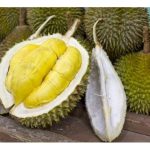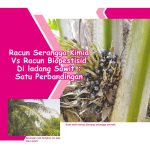In the lush tropical landscapes where hybrid coconut trees are grown, farmers often strive to maximize growth and yield. Among the many traditional recommendations you might hear is the practice of applying salt under coconut palms. Historically, salt has been used as a soil amendment, sometimes intended to supply trace elements like sodium or to enhance nutrient uptake. However, the necessity of applying salt, particularly for modern hybrid coconut varieties, is more nuanced than it may first appear.
Hybrid coconut trees, which are bred for higher yield, disease resistance, and faster growth, typically thrive in well-drained, fertile soils rich in organic matter. These trees do require adequate nutrients — especially potassium, magnesium, and micronutrients like boron — but sodium, the primary component of common salt, is not usually a critical nutrient for coconut growth. In fact, excessive salt can be detrimental, causing soil salinity, root burn, or stunted growth, particularly in younger palms.
So, is it necessary to apply salt under hybrid coconuts? In most modern agronomic practices, no, it is not necessary as a routine measure. Instead, soil testing is the recommended first step. By analyzing the soil’s nutrient profile, farmers can determine which elements are deficient and need supplementation. This ensures that the palms receive exactly what they require without risking salt stress.
For alternatives, there are several more effective and safer options than dumping salt at the base of the palms:
- Potassium-rich fertilizers – Coconut palms are heavy potassium feeders. Using muriate of potash (MOP) or organic sources like wood ash can boost fruit production without harming the soil.
- Magnesium and boron supplements – These trace nutrients are often overlooked but are essential for flower formation and nut development. Magnesium sulphate (Epsom salt) or borax can be applied in controlled doses.
- Organic mulching – Applying coconut husks, compost, or green manure around the base improves soil structure, moisture retention, and slow nutrient release. This reduces the need for chemical amendments.
- Foliar sprays – Micronutrients such as zinc, iron, or boron can be supplied directly through foliar application, bypassing soil issues and preventing the risks of over-salting.
- Biofertilizers and soil microbes – Beneficial microbes can enhance nutrient availability, fix nitrogen, and improve soil health, making salt or other chemical amendments largely unnecessary.
In essence, while salt has historical significance in coconut cultivation, its routine application under hybrid coconut trees is generally unnecessary and can even be risky. Modern, science-backed practices favor targeted nutrient management, organic amendments, and soil health improvement. By focusing on what the tree actually needs — rather than defaulting to salt — farmers can secure healthier palms, higher yields, and a more sustainable plantation.
Source: Professional Platform
Note: For Reference Only










